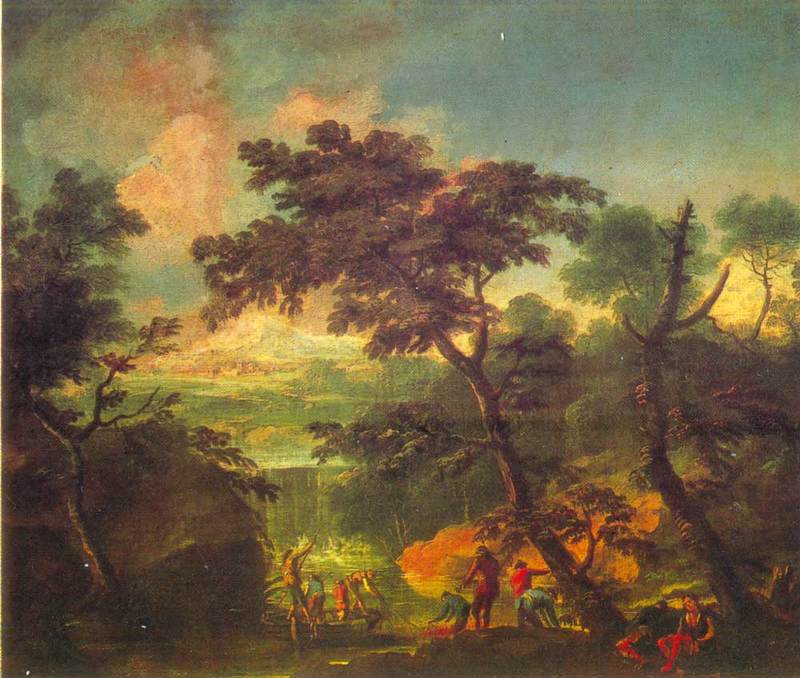| Dates | 1676 - 1730 |
| Roles | Artist |
| Nationality | Italian |
| Died | Venice, Italy |
Marco Ricci Shoes
The Four Seasons were inspired by four paintings of the seasons by the artist Marco Ricci. So the Four Seasons is a combination of the arts of music, painting and poetry. (1) The first concerto of the Four Seasons is Spring, describing its freshness and beauty. Spring is a solo concerto with 3. Uncommon to the time, The Four Seasons were published with accompanying poems, possibly written by Vivaldi, to illustrate what is was about the seasons that his music was designed to evoke. Vivaldi was inspired by many landscape paintings by Marco Ricci, an Italian artist of the time, and wanted to represent each season.
Born to a family of artists, Marco Ricci first studied with his uncle Sebastiano Ricci. After murdering a gondolier in a brawl, Marco fled to Dalmatia, where he spent four years apprenticed to a landscape painter. By 1705 he was in Milan working with Alessandro Magnasco, absorbing his free handling of paint. After trips to Florence and Rome, he went to the Netherlands and studied Dutch landscape painting on his way to England. During nearly two years in London, he created opera sets and decorated private homes.
Back in Venice in 1716, Marco continued his stage work and painted landscape backgrounds for Sebastiano's works. Around 1720 he made small landscapes in

The Four Seasons Stories can be told orally or through poetry, music and paintings. Composers often write music to tell a story using sound (without words). Vivaldi composed The Four Seasons based on landscape paintings by Italian artist, Marco Ricci. The composition consists of four pieces of music (Spring, Summer, Autumn, and Winter). The Four Seasons. A composition written by Antonio Vivaldi. A piece of music. Someone who writes music. Non-religious music. Paintings by Marco Ricci. What inspired Vivaldi to compose 'The Four Seasons' The sonnets Spring, Summer, Fall and Winter.
This information is published from the Museum's collection database. Updates and additions stemming from research and imaging activities are ongoing, with new content added each week. Help Clickshare mac download. us improve our records by sharing your corrections or suggestions.
Marco Ricci Four Seasons Spring Painting


Dr Marco Ricci
Every effort has been made to accurately determine the rights status of works and their images. Please contact Museum Rights and Reproductions if you have further information on the rights status of a work contrary or in addition to the information in our records.
Marco Ricci Md
The Baroque era was from 1600 BC and was established in Rome, Italy. This era exhibited characteristics for instruments such as the lute, violin, viola,…show more content…
Each concerto contains 3 movements, every movement presenting diverse sides of that particular season. “ ‘The Four Seasons’ concertos were inspired by four paintings of the seasons by the artist Marco Ricci.” [1] (See image below) because of this, these 4 Concertos are classified as Programme music. This is music that is used to tell a story or paints a picture in the audience’s mind about what is happening in the composition. The title is usually a guide line about what the piece will be about. “Vivaldi’s ‘The Four Seasons’ stand out as some of the most descriptive music ever written and were revolutionary in their time.” [1]
‘La Primavera’ or “Spring,” specifically is composed in three movements, Allegro, Largo, and Allegro. This shows the contrasts and unity in the spring time, with the flowers blooming, birds coming out of hibernation and the snow melting. Contrasting to the thunderstorm and wet weather of spring portrayed in the first and second movement. The third movement consists of the lively and pulsating depiction as the tempo of the piece is sped back to Allegro and the birds and clear skies are again represented.
“To the merry sounds of a rustic bagpipe. Nymphs and shepherds dance in their beloved spot When Spring appears in its brilliance.”
To accompany Vivaldi’s compositions, a sonnet was used to describe each season. All his sonnets had a “certain number of beats in each line, a specific rhyme scheme, and it must be exactly
